CUSTOM WEIGHTING
Weight Glossary
-
Swing Weight
Measures how heavy the paddle feels when swung and is determined how the weight is distributed throughout the paddle. THIS IS MOST IMPORTANT NUMBER
-
Twist Weight
A weight that measures how resistant the paddle is to rotation when the ball is hit off center. When hit off center the paddle will twist causing less stability. The higher the twist rate the larger the sweet spot.
-
Balance Point
The distance of the paddles center of gravity from the butt of the handle. This is measured in cm. The higher the number the further the balance point is from the handle. Balance point determines the head heaviness of a paddle.
-
Head Heavy
This number uses the balance point number to determine how head heavy a paddle is. Paddles that have a high swing weight have a higher head heavy number then a lighter swing weight paddle. A paddle with a higher head heavy number generally hits harder.
-
Paddle (Static) Weight
This number is what the paddle weighs on a scale. This number or weight is THE LEAST IMPORTANT NUMBER yet used all the time.
Why is twist weight so important?
As players, we have been conditioned to only care about static/paddle weight. Have you ever you ever heard someone say "Hey, what's the twist weight on your paddle?" Instead, you hear "I like my paddle to be 8.4 oz."
Hopefully with a little education, we hear people talk about twist weight in the future. This number is so important in the overall performance of a paddle. In a nutshell, the higher the twist weight the larger the sweet spot. If your paddle already has a high twist weight, then adding proper weight can only enhance the sweet spot. A larger sweet spot only makes the game easier and ultimately makes you perform better on the court.
A paddle with a low twist weight (usually edgeless paddles) are harder to control off center hits. Our two paddles (13 mm and 16 mm) have some of the highest twist weight numbers of all the paddles on the market. Our 13 mm "RUSH" has an avg twist weight of 6.05 and our 16 mm "THREAT" has an avg twist weight of 6.50. By adding lead weight in the proper places, we can get the twist weight up over 10% of the original number. What this means is less mishits and more control. Paddles with a low twist weight are at a disadvantage, and we know that high twist weighted paddle like ours, gives the player the best chance at hitting consistent, quality shots.
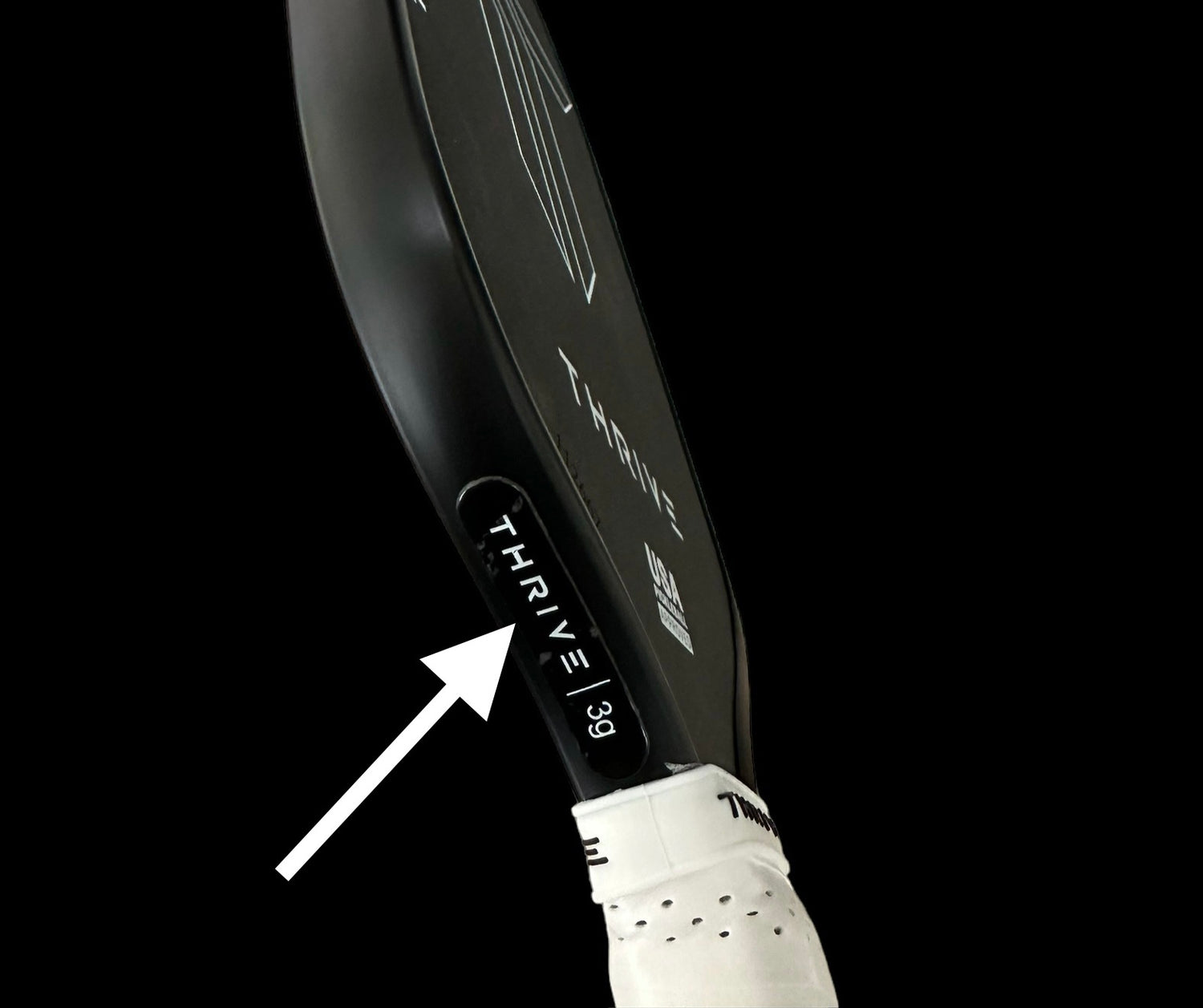
THRIVE CUSTOM WEIGHTING
3 GRAMS FROM THE HANDLE
SWING WEIGHT INCREASES BY +.65
TWIST WEIGHT INCREASE BY +.13
We suggest you start with this setup if you elect to add lead to your paddle. Your paddle will be feel a little heavier but more stable on dinks. The twist weight increases slightly which will make the sweet spot larger.
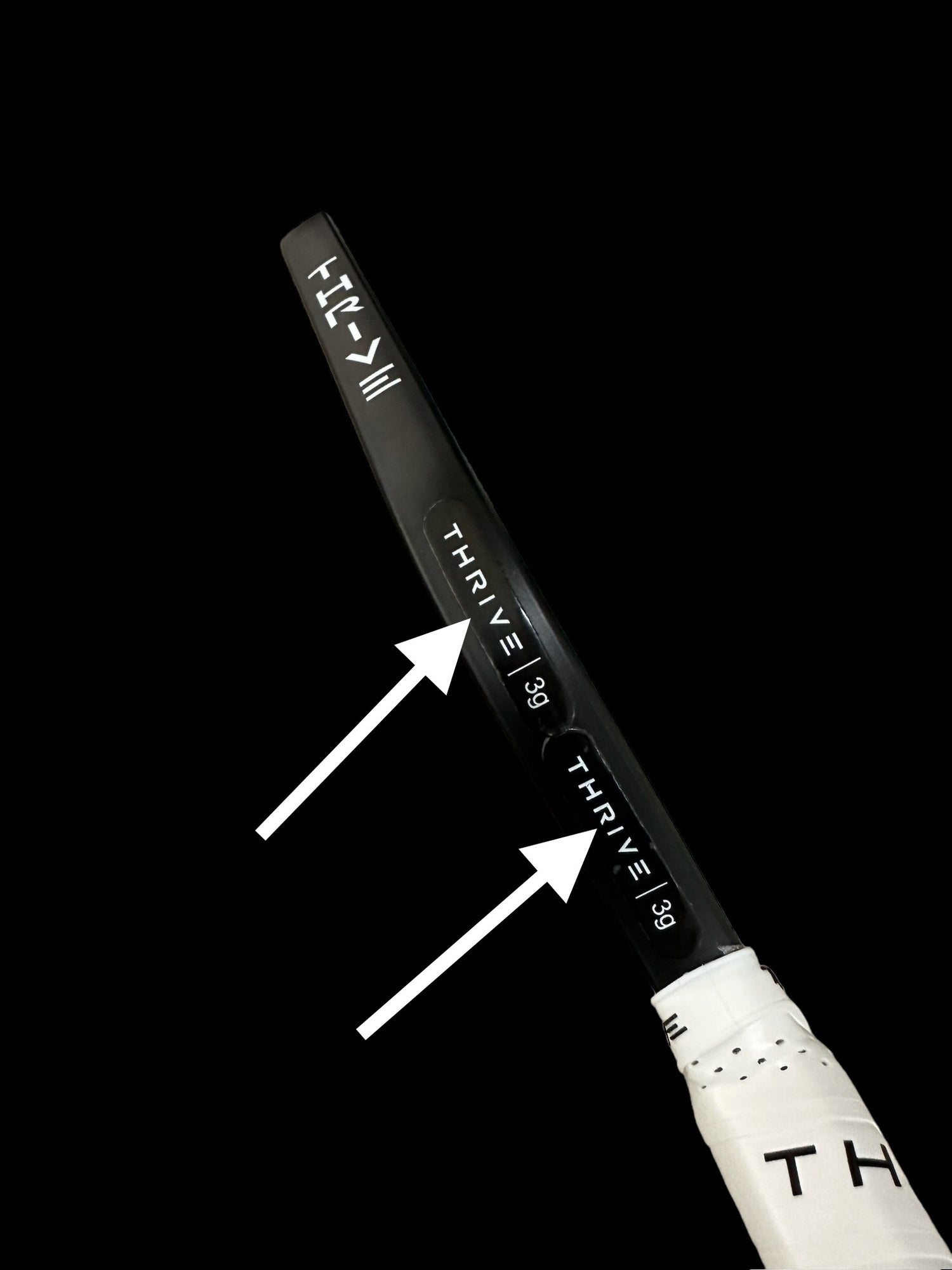
THRIVE CUSTOM WEIGHTING
6 GRAMS FROM THE HANDLE
SWING WEIGHT INCREASES BY +1.85
TWIST WEIGHT INCREASES BY .52
This is the most common setup among players if they can handle the increased swing weight. By adding 6 grams from the handle to both sides, swing weight increases by 1.85 pts. Twist weight goes up 7.6% by adding weight to this location which increases the sweet spot considerably. With this setup you will notice better control and feel. You will lose a little head heaviness but will still have good power on drives.
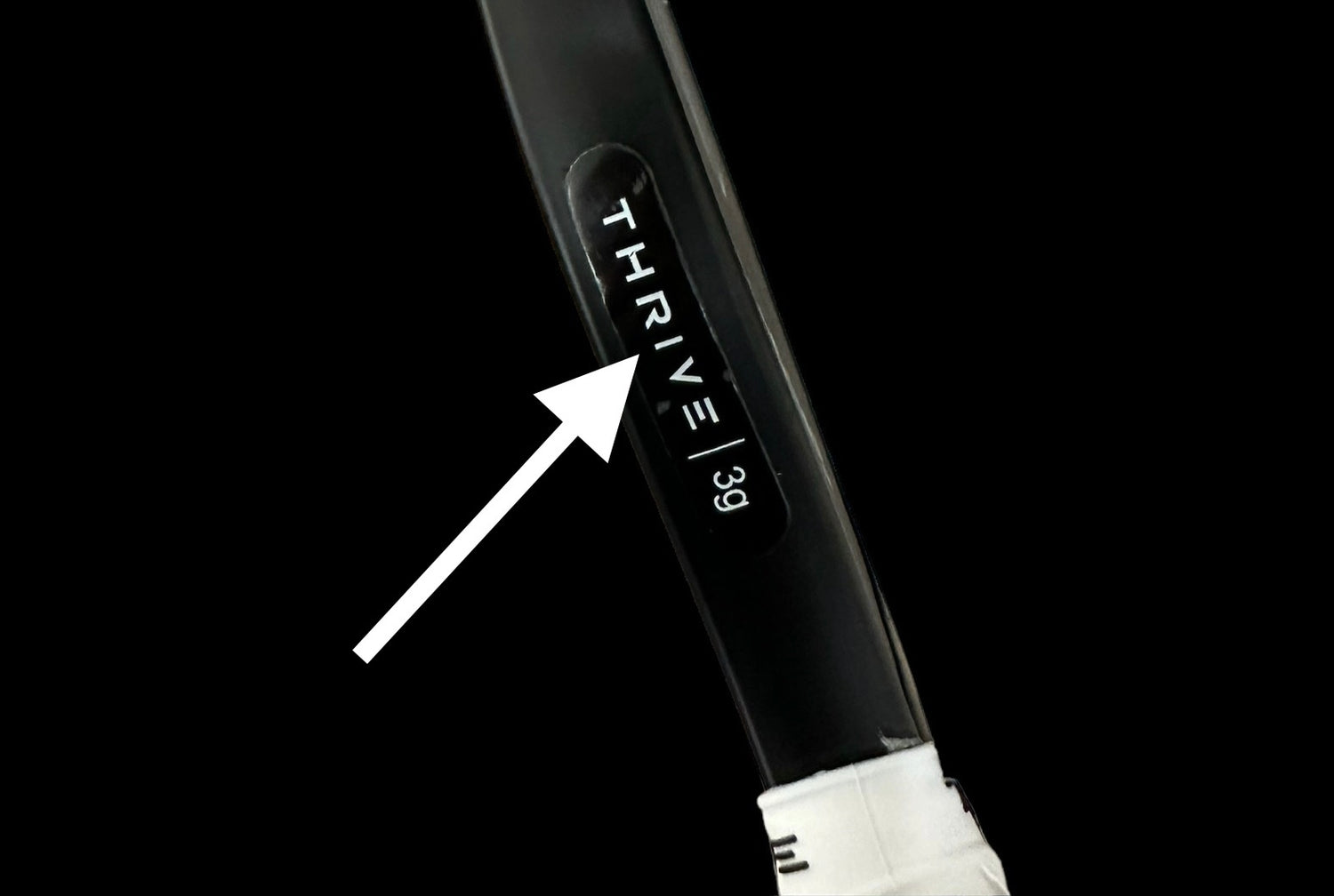
THRIVE CUSTOM WEIGHTING
3 GRAMS 1" FROM HANDLE
SWING WEIGHT INCREASES BY +.97
TWIST WEIGHT INCREASE BY +.31
If you first tried putting 3 grams starting at the handle I would move the weight 1 inch from the grip and try this area. Your swing weight will increase slightly but you will make a sizable increase in twist rate which will make the sweet spot larger.
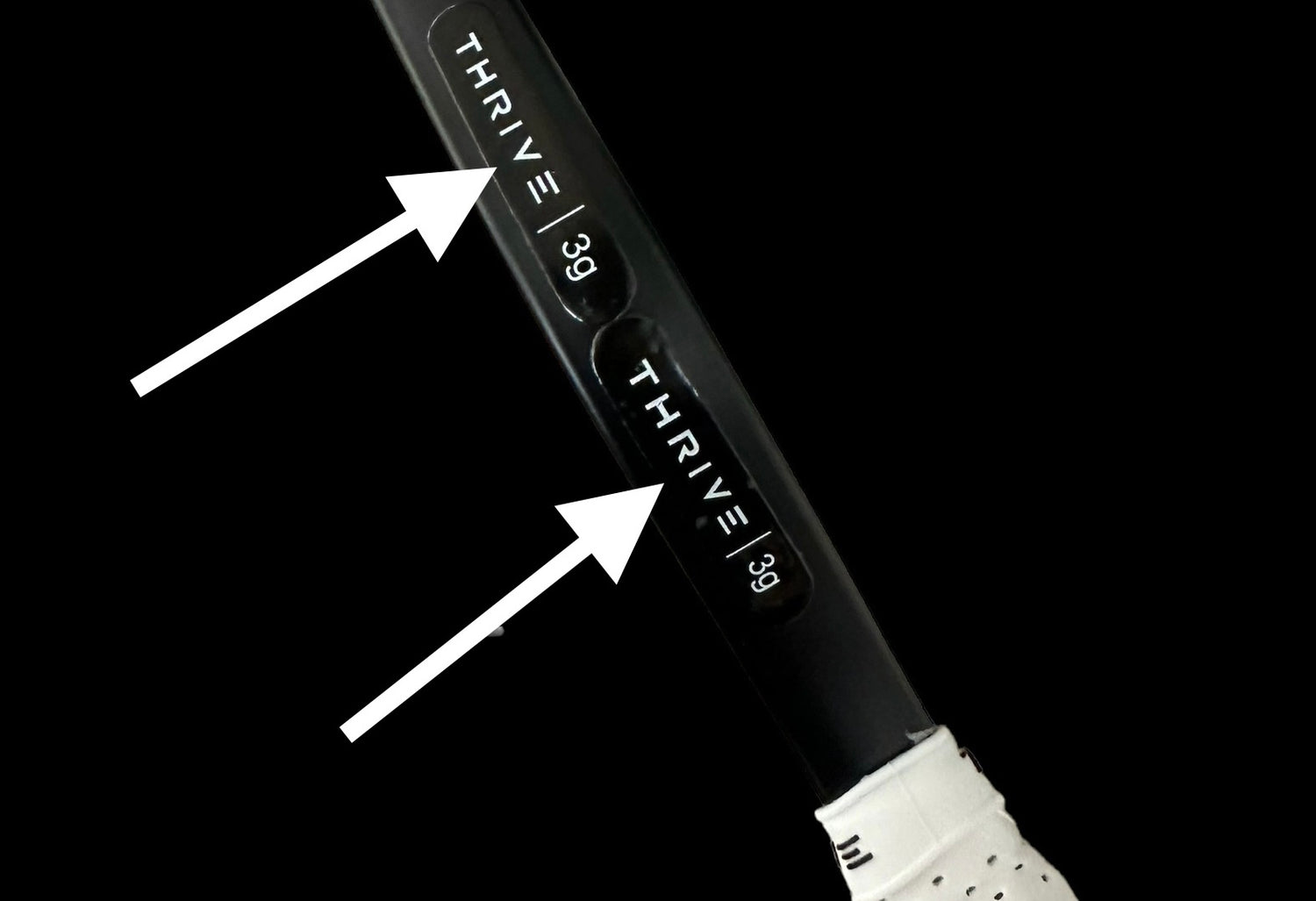
THRIVE CUSTOM WEIGHTING
6 GRAMS 1" FROM THE HANDLE
SWING WEIGHT INCREASES BY +2.51
TWIST WEIGHT INCREASE BY +.79
When weight is added further up the paddle, you will start to see sizable increases in both swing weight and twist rate. With this set up, the twist rate increases 11% as the swing weight increases by 2.51. If this setup feels good, and you do not lose hand speed then this is a very good option.
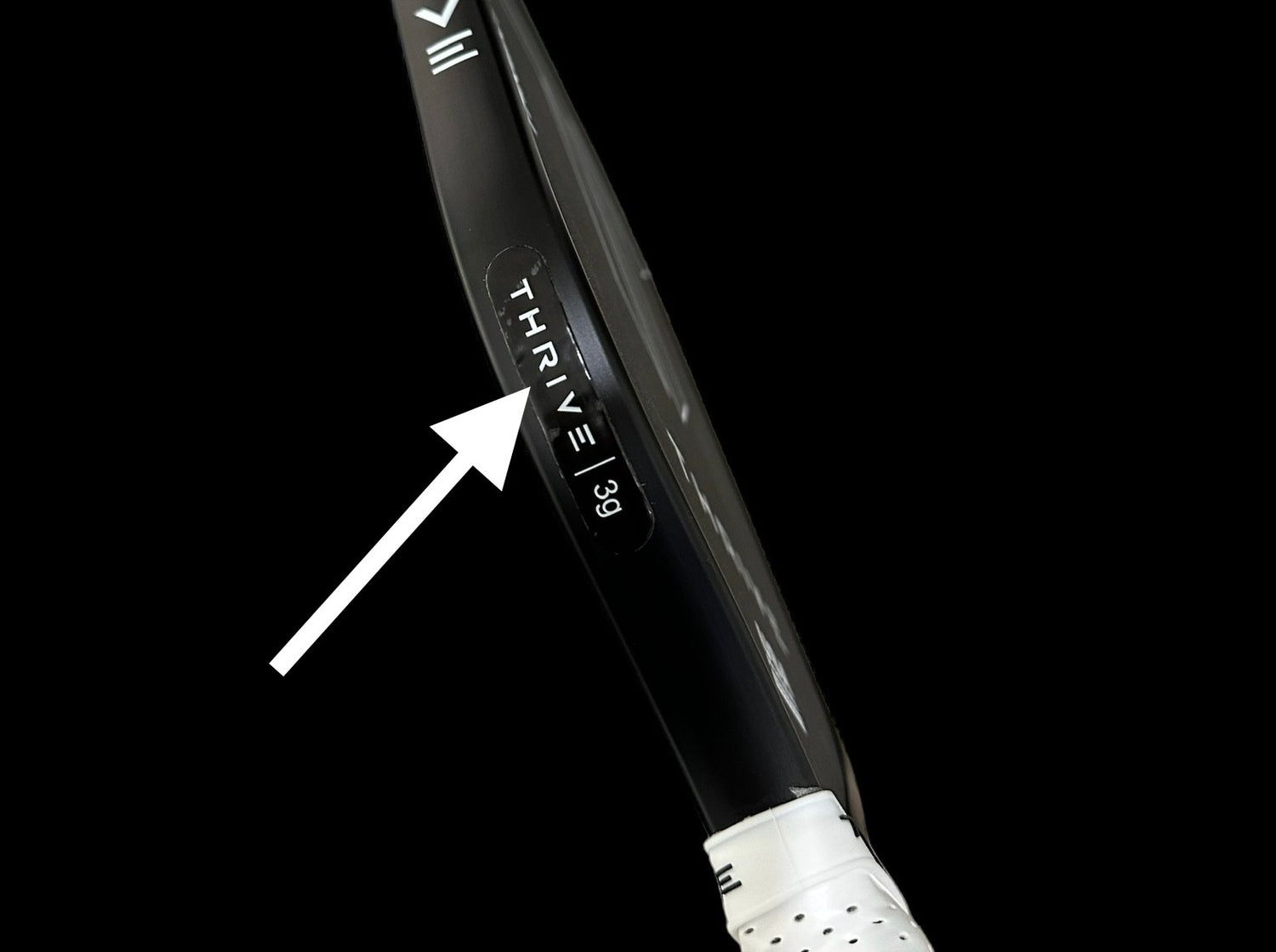
THRIVE CUSTOM WEIGHTING
3 GRAMS 2 1/2 " FROM HANDLE
SWING WEIGHT INCREASES BY +1.25
TWIST WEIGHT INCREASE BY +.43
This area is very good if you want a little extra swing and twist weight. This location will give the paddle a very controlled solid feel.
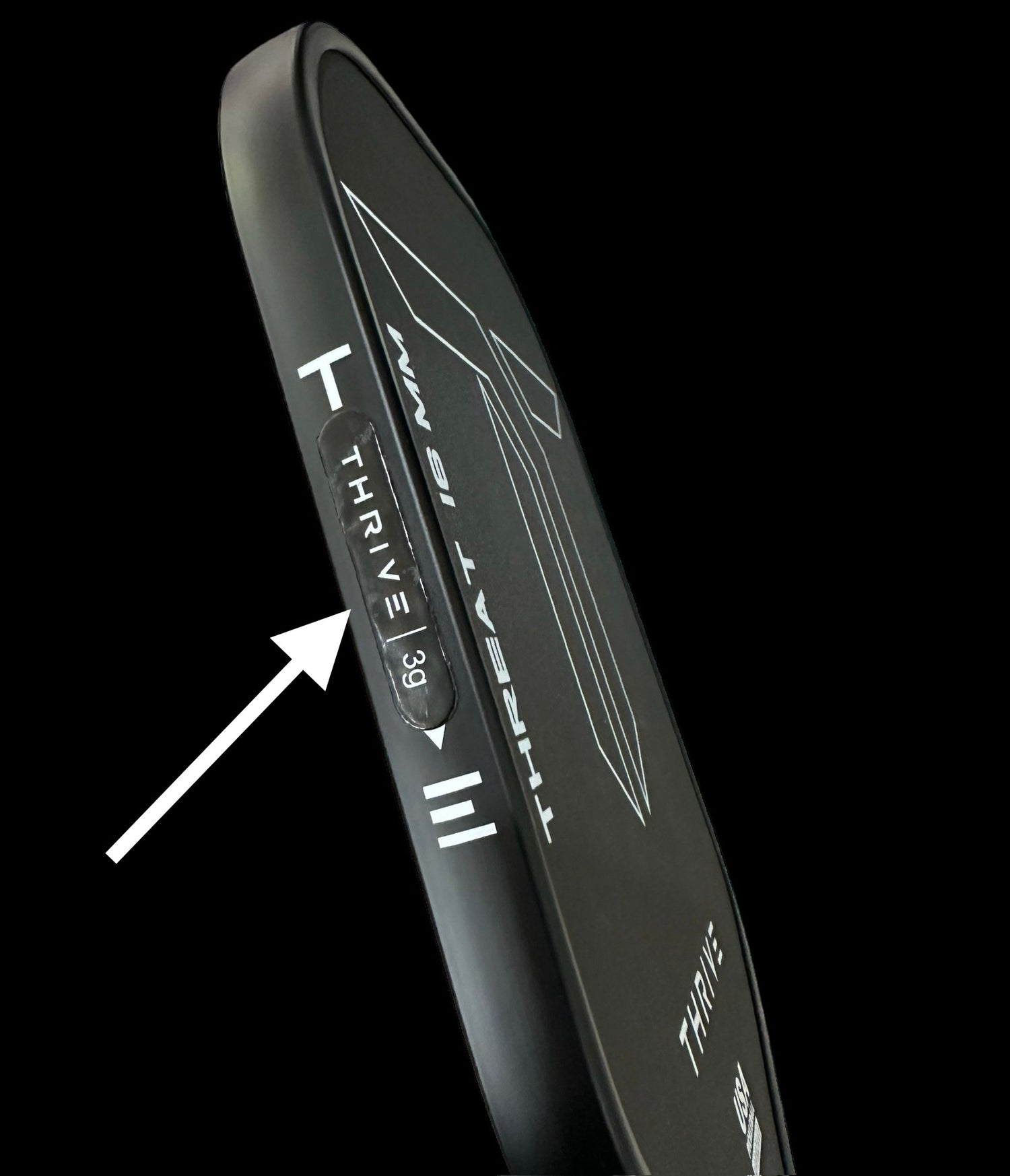
THRIVE CUSTOM WEIGHTING
3 GRAMS AT 3 & 9 O'CLOCK
SWING WEIGHT INCREASES BY +3.67
TWIST WEIGHT INCREASE BY +.73
This setup adds a lot of swing weight to the paddle but also adds a lot of twist weight. If you love to reset the ball and have great control, this setup may be for you. If you like to do rolls at the net, this setup may be difficult with so much weight on the sides.
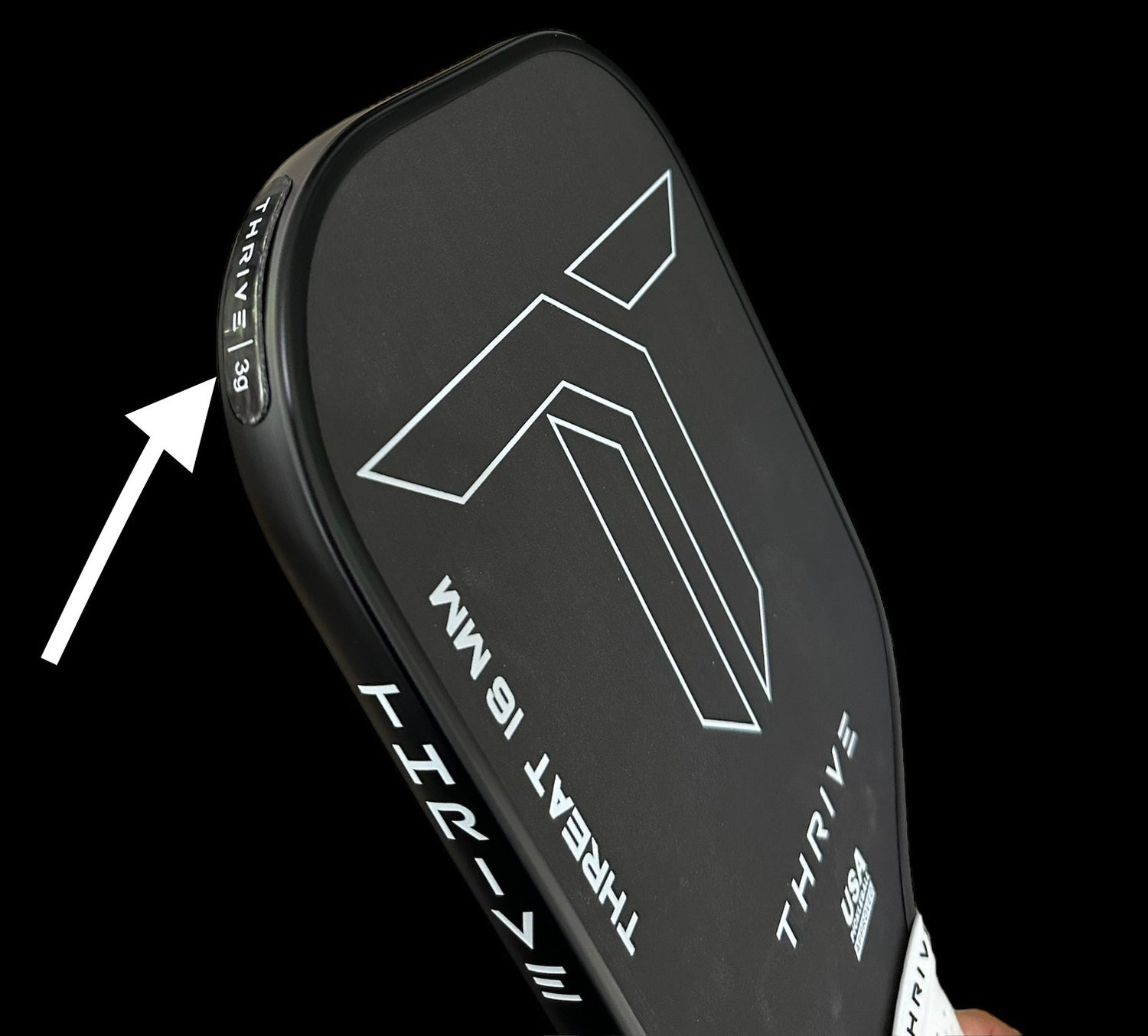
THRIVE CUSTOM WEIGHTING
3 GRAMS AT 10 & 2 O'CLOCK
SWING WEIGHT INCREASES BY +7.87
TWIST WEIGHT INCREASE BY +.32
10 & 2 is the power setup. The swingweight goes thorugh the roof to giving you the most power. Twist rate doesn't move that high, but if you want power and can handle the heaviness, this would be your setup. Beware of tennis elbow with this setup and other potential injuries. We are not doctors, but want customers to know the risks.
What setup is right for you?
Is there a certain placement of weight that is better then another?
A: No. The placement of weight is a personal preference. How it feels in your hand and how it performs is what is most important. Our guide just shows you what happens when weight is added to certain parts of the paddle.
Why is the Thrive Weighting System unique?
A: Once you have found where you like to place your weight, you have the ability to duplicate your paddle forever. This is not possible with other paddles unless you have the machines to weigh swing and twist weight.
I'm not that familiar with swing weight only paddle weight. What swing weight should I choose?
A: We like customers to choose their swing weight based on what they want to accomplish on the court.
- (Light) A light swing weight paddle is easier to swing and will be easier to generate ball speed if you lack in this area. Light swing weight paddles are easily maneuverable with less effort. Most people fall into this range if they don't have a high swing speed or hit very hard.
Other choose a lighter paddle because they like to have faster hands and are not worried about creating power. Players that already generate enough power may opt for a lighter paddle for increased hand speed and spin. If weight is added correctly, a light paddle can be very effective for beginners, intermediate and advanced players. - (Medium) This weight is for the all around player. Most intermediate to advanced players like the feel of a medium swing weight paddle. When adding the proper weight, this swing weight can give you great control, a large sweet spot and an overall well balanced paddle.
- (Heavy) A heavy swing weight paddle is for someone who is strong and looking for the most power possible. The sweet spot will be the largest, but you will lack maneuverability and hand speed. Generally, a heavier paddle to suited for players who play a slower paced game where hand speed is not as important.
Other companies list the range of swing weights on the paddle. Is this the same as your paddles?
A: No. Unless you know the swing weight, any range of the swing weight is useless. Every paddle has a unique makeup with weight. The only true way to customize your paddle is to know these numbers.
